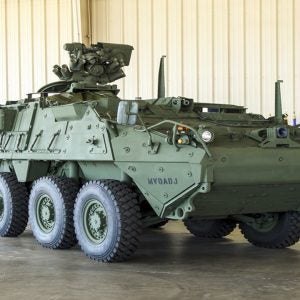Curtiss-Wright to Deliver Turret Drive System and Australian Industry Capability for Land 400 Phase 2 Programme
Curtiss-Wright’s Defense Solutions division today announced it has secured a contract with Rheinmetall Defence Australia to deliver its turret drive stabilization system in support of the Australian Army’s Project Land 400 Phase 2 Combat Reconnaissance Vehicle (CRV). Under the contract, Curtiss-Wright will deliver 133 of its state-of-the-art Turret Drive Servo Systems (TDSS) and associated hand controllers to Rheinmetall. The delivery incorporates more than 50% Australian Industry Content (AIC), with Curtiss-Wright working alongside a team of Australian Small and Medium sized Enterprises (SME) following initial industry engagement activities in 2018 and 2019. The turret drive technology is patented by Curtiss-Wright and unique globally. Under the contract, shipments are scheduled to run through Q1 2026.
“We are very proud that Rheinmetall has selected our turret drive stabilization solution to support the Australian Army’s important Project Land 400 Phase 2 Program,” said Lynn Bamford, President, Defense and Power Segments. “This contract marks a significant Combat Reconnaissance Vehicle design win for our cost-effective, scalable Turret Drive Servo System and our commitment to incorporate local industry partners into this program.”
The products covered by the contract were designed at Curtiss-Wright’s Drive Technology facility in Neuhausen am Rheinfall, Switzerland. Under the contract, Curtiss-Wright will manufacture and produce a significant amount of TDSS Power Circuit Boards (PCB) and Chassis kits in Australia. With this strong commitment to Australian Industry, Curtiss-Wright has applied its state-of-the-art identification and evaluation process to select qualified local suppliers.
Major milestones in support of this agreement have already been achieved, including initial planning visits to Australia, which began in 2018 and continued through Q1 2020, and the first delivery of TDSS sample PCB Boards and Chassis kits to Australia.
In the next phase of the Australian Supplier Partner identification and evaluation process, Curtiss-Wright will assess the parts received, and then enter into a memorandum of understanding (MoU) with the selected suppliers in Q2 2020, followed by contract negotiations.
After establishing the contractual baseline set, detailed knowledge transfer will commence, complemented by Curtiss-Wright’s TDSS experts, who will provide on-site support and training directly to the new Australian Supplier Partners at their own sites. On-site support is scheduled to run through Q4 2020. The go-live plan for Series Production with the Australian Supplier Partners is scheduled for Q1 2021 .
“Curtiss-Wright believes this agreement will foster and sustain a new partner-network in Australia,” added Ms. Bamford. “In turn, we hope a strong partner-network creates an environment supporting new jobs and enables Curtiss-Wright and Rheinmetall to support Land 400 Phase 2 with significant Australian industrial content.”
The final assembly of the products covered by this agreement will take place at Rheinmetall’s new Military Vehicle Center of Excellence (MILVEHCOE) facility in Redbank, Ipswich, Queensland, Australia.
About Curtiss-Wright’s Turret Drive Servo System
Curtiss-Wright’s TDSS delivers unmatched target location accuracy and turret stabilization, while providing system integrators with an unprecedented level of freedom to define and deploy the exact solution they require. It uniquely enables system designers to upgrade and add stabilization functionality as their mission requirements change. The TDSS uses standard system configurations, which speeds system development and enables programs to reach demonstration and production phases more rapidly. The use of preconfigured TDSS system components also reduces the time and costs associated with the requirements definition process.
TDSS enables system integrators to select the exact aiming and stabilization solution that their platform requires – from a manually operated drive all the way up to a highly sophisticated, stabilized drive system – while streamlining enhancements and/or system modification for use on different platforms. The TDSS approach is significantly more cost-effective and flexible than traditional bespoke aiming and stabilization system alternatives. TDSS is designed to make it easy for system integrators to configure only the system that they require now, and later add increasing levels of stabilization as their mission evolves. TDSS system components can be easily adapted for use on different ground vehicle turrets to meet dynamic program requirements including performance and precision.







